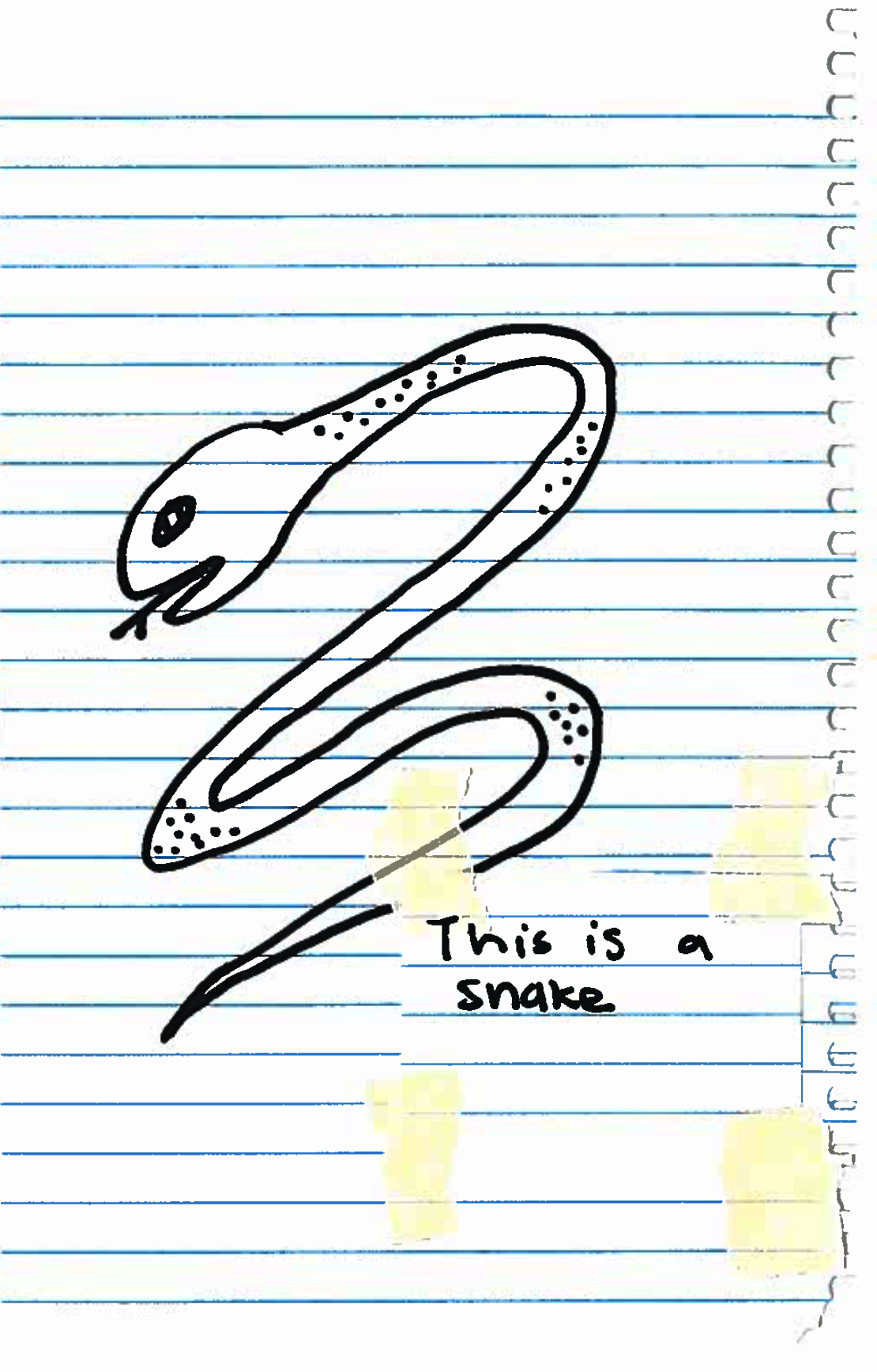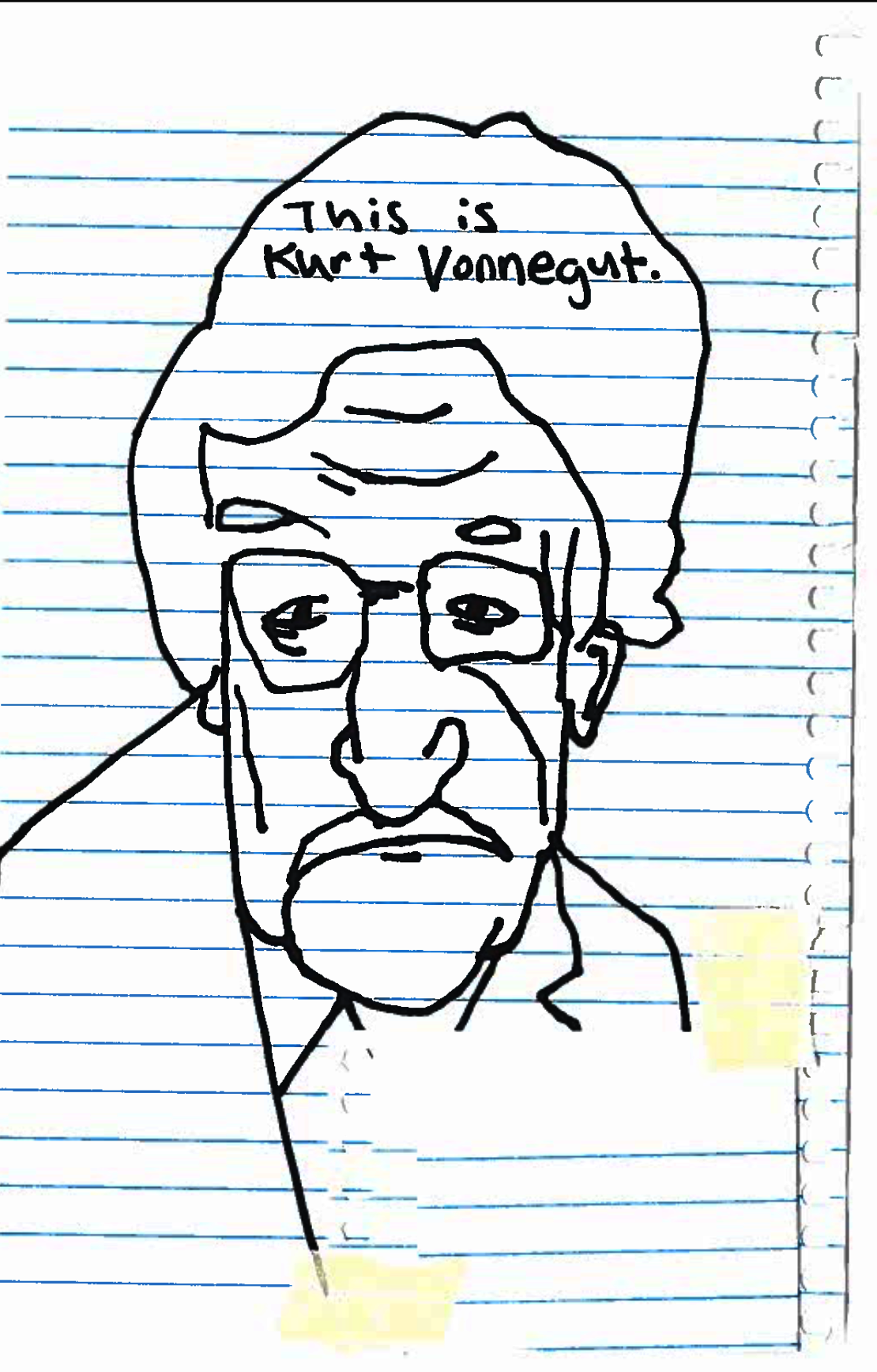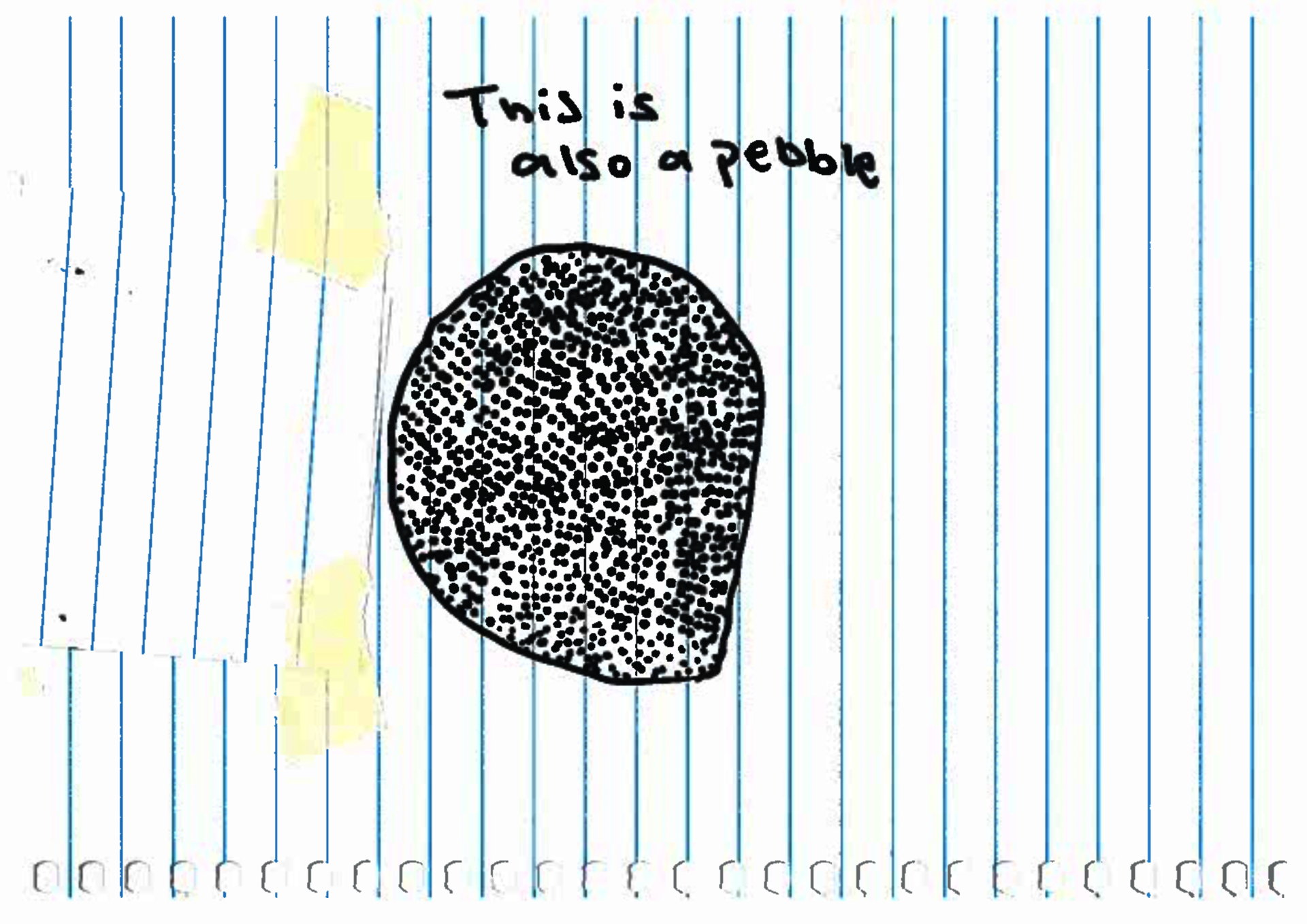ABSTRACT
This thesis explores process-forward visual arts education in the Greater Providence arts education community. The researcher conducted interviews with arts educators as well as administrators working within organizations guided by a “process-forward” philosophy. Interview transcripts are analyzed to identify any emergent themes of intended and actualized student learning outcomes as well as other commonalities which exist among the interviewed organizations. This investigation found that, within these organizations, multiple, significant forms of student learning outcomes were identified that extended well beyond any particular aesthetic merits of the artistic products created by students
The author calls, in this thesis, for a recalibration and expansion of existing methods of assessing visual arts learning in order to take greater account of process-forward learning outcomes, which will, the author argues, provide a much more comprehensive view of what students gain through engaging in the visual arts.
COUNTING PEBBLES?
The title of my thesis came from a conversation I had with a friend, who was curious as to why I decided to go to an arts university. In my conversation with my friend, I explained my decision this way: I ended up going into art, because it seemed like the closest thing to my ideal field of studies. I would have just as happily gone into counting pebbles. But, since counting pebbles wasn’t a class in high school, yet art was, I was funneled into an art school.
As I developed this thesis, I realized that the phrase “Counting Pebbles Wasn’t Even a Class in High School” captured the spirit of my inquiry with clarity and poetry. I am sincerely perplexed about why counting pebbles couldn’t be a part of an arts curriculum. What assumptions have we made about arts education to disqualify counting pebbles as art-making? And do such assumptions help or hinder our students? In this thesis, I make a case for counting pebbles, as well as for a myriad of other practices to be included and indeed centralized within visual arts education. I say this, even though such practices may not yield artistic products that represent current aesthetic values or produce art products conventionally considered beautiful. Yet, I contend that they still have concrete, positive effects on students.
Image

▲ This is a pebble.
"I would have just as happily gone into counting pebbles. But, since counting pebbles wasn’t a class in high school, yet art was, I was funneled into an art school."
Image

▲ This is a snake. The relevance of this image to the text is up to interpretation.
At the end of high school, I clung to the arts as a lifeboat sailing towards hope and sanity. At the Rhode Island School of Design, I met an entire group of people who, just like me, had been saved by the arts. Finding such a supportive community was, and still is, an immense treasure. However, as my initial excitement waned, I gradually recognized a misalignment between my own philosophies and the institutional ideology of artistic production: I sensed that there was an almost exclusive emphasis placed on the merit of the end product which results from the making process, while the significance of a creative experience was thoroughly under-acknowledged. Even when the artistic process was discussed, it was almost always discussed as a symbolic, performative action serving to further embed meaning in the final product, and little attention was paid to what I viewed as the experiential journey of making. Eventually, I began questioning this taken-for-granted assumption that the artistic process must always be subservient to the artistic product, and that art-making is, by nature, an externalizing activity which takes the artist’s “being” (body, time, rigor) and turns it into an immortal, inorganic “thing.” Could it be possible, I asked, to conceive of the art object as some kind of bi-product of the artistic practice, so that we may understand phenomenologically the creative process itself?
Kurt Vonnegut (2007) wrote in A Man Without a Country: “The arts… are a very human way of making life more bearable. Practicing an art, no matter how well or badly, is a way to make your soul grow.”(p. 24) I was initially drawn to the arts because it was growing my soul. It was not because it gave me beautiful things. The beauty of art permeates every second of the making process, and it can only be felt so clearly while the making is happening in the present tense. When a work is finished and hung on a wall, it is hung there only for remembrance.
So, how do such thoughts connect back to arts education? I believe that, in order to introduce more people to the beauty of art, we must mobilize them all as makers. To do so, as a matter of urgency, we must redirect our attention as arts educators from the artistic (bi)-products to rather focus on the experience of making. Also, we need to legitimize all creative processes that have been demoted to the ranks of “craft,” “chores,” “doodling,” “fidgeting,” “home-making,” and so on and so forth. We need to teach in a way which isn’t preoccupied with evaluating the aesthetic merit of an art object. I believe doing so will allow us to capture folks from all walks of life who claim that they “can’t draw.” We must convince them that it’s not a matter of whether they can draw, it’s a matter of whether they would draw. We need to explain that making is just like throwing pebbles into a pond. And the ripples generated by such an activity exist for only a fleeting moment, but the beauty embodied in that moment is plain as day, and it is there for all to see.
SAGE WISDOM
“All these soft skills are good and important. Imagine if you’re a youth, and your [predominant life] experience (at home, school, church etc,) [is showing] up at a certain time and [being] told what to do. [A]ll you have to do is follow the [rules.] Then, at the end of school, whether you’re going off to college, or trying to go into the workforce, you’re all of a sudden met with very different expectations. Now you need to advocate for yourself, … build your own community, [and] ... learn how to ask for help. We can’t expect students to all of a sudden have those skills if they’ve been fed a script all life long.” — Emily Ustach, Deputy Director at New Urban Arts
“[O]ur individual learning plan is a lot about helping students articulate what their goals are for themselves and … figuring out how to support them to achieve those goals. … [This is] about feeling like you have the agency to set your own goals and achieve them. [A] lot of times, at a lot of places, we talk about agency, but I'm not sure we always think about how to give students the skills they need to attain agency [and] support their own agency. One thing we [prioritize] is helping students articulate goals, … figure out the steps to achieving those goals, and to get the support they need.” — Chloë Kline, Education Director and Resident Musician at Community MusicWorks
“Yesterday, I logged onto class a half hour early … , and this little nine-year-old was also a half hour early. She’s been coming to classes for a while now, so we know each other, and we were just chatting. She’s one of those nine-year-olds that is actually a thirty-year-old in a nine-year-old’s body (chuckle). I feel incredibly lucky to have the space to make connections with young people, and I really strongly believe that they’re our future. We need to provide them with a toolbox, but I don’t think we so much need to empower them. I think they already have that power, and they already have that voice. We just need to provide them with the tools, the space, and the positive role models, so that they can live the way they want to live and get their voice out there.” — Camille Montano, Program Manager at City Arts
“[The most important thing students may take away from Riverzedge is] self confidence, probably. I want them to be self confident, because I think there’s too many things in their daily lives that tell them: ‘they can’t do this, they can’t be that’ - even within their own families. The population we work with is reflective of the demographic of Woonsocket (RI), and Woonsocket has the highest rate of poverty in the state, the highest rate of teen pregnancy in the state, and the highest rate of child abuse and neglect in the sate. From the moment our youths wake up till the time they go to bed, they’re being told they can’t do shit and they can’t be anything. So, if they can leave Riverzedge being more self-confident in the choices that they make, I think that might be the most important thing we can do.” — Brad Fesmire, Artistic Director at Riverzedge
Image

WHERE DO WE GO FROM HERE?
Image

▲ This is a pebble too.
Before I joined the Department of Teaching + Learning in Art + Design and began researching as an arts educator, I was a Painting major at the Rhode Island School of Design. The four years I spent as a fine arts student offered me an invaluable opportunity to immerse myself in a community of like-minded artists and to begin seeing the world through an entirely different lens. This being said, I cannot help but say that, from my perspective, the RISD curriculum seems regrettably flawed and incomprehensive.
Throughout the four years I spent as an RISD undergraduate student, and especially as graduation approached in senior year, I witnessed my classmates go through frequent and at times violent existential “fits,” during which their relationships with art-making would temporarily break down - only to be repaired in order to beat the next looming deadline. Since developing this thesis, I have also developed a hunch which blames my classmates’ breakdowns on how art was discussed on campus both in academic settings as well as in social spaces - While since day one, there has been extensive conversation on how art may be used as a vehicle for philosophy, or how students may keep “pushing” art as medium, there was scant discussion on how art making is providing nourishment for students, or what being an artist means outside of a strict studio context. In other words, there was not much talk on what bell hooks meant when writing about “self-actualization.” My hunch is that my friends were going through that kind of volatile, existential tumblings, because what they once did for fun had become draining, and what was once playful had become punishing and even injurious.
At the conclusion of my undergraduate studies, I became curious about whether there could be an alternative pedagogical approach which is more holistic and sustainable for its students. During thesis research, I came into contact with a plethora of scholarly literature and was able to begin imagining a kind of arts education which is intense and high stakes, but also joyful and nourishing. Out of all that I read for the purpose of this thesis, I was most touched by bell hooks’ (2017) book Teaching to Transgress. In this book, hooks wrote that she views students as “‘whole’ human beings, striving not just for knowledge in the books, but knowledge about how to live in the world” (p. 15) as well. This seemingly simple acknowledgement has complex and multifaceted implications. In one way, hooks is talking about the importance of connecting classroom content to a broader, real world context; in a deeper sense, hooks is also implying that students are inherently curious about discovering their ways to be in the world in an existential sense. Therefore, in order for (arts) education to truly fulfill students, it must be concerned with more than teaching skills and facts.
As I complete my thesis research, although I am far from becoming a learned arts educator, I have surely started to develop my own unique perspective on the field of arts education. I feel empowered by the scholarly literature I have reviewed as well as the conversations I’ve had with established arts educators to keep developing a professional practice centered around process-forwardness. As I conclude the last chapter of this thesis, I would like to call back to the quote by Kurt Vonnegut (2007) mentioned in my opening chapter: “Practicing an art, no matter how well or badly, is a way to make your soul grow.” (p. 24) Indeed, I believe process-forward arts education is a way to support students in growing their souls, and after completing this thesis, I now believe, more certainly than ever, that the growth of one’s soul is far more valuable than any precious artwork.
Image

ANNONTATED BIBLIOGRAPHY
- After School: Providence ¡CityArts! for Youth: United States. CityArts Site. (n.d.). https://www.providencecityarts.org/.
- Anonymous Student, personal communication, April 13, 2021
- Beese, J. A., & Martin, J. L. (2019). Csikszentmihaliyi’s Concept of Flow and
- Theories of Motivation Connection to the Arts in an Urban Public High School. Journal for Learning through the Arts, 15(1).
- Community MusicWorks. (2020, October 8). https://communitymusicworks.org/.
- Freire, P. (2018). Pedagogy of the oppressed. In Pedagogy of the oppressed (pp. 71-86). New York, NY: Bloomsbury Academic.
- Garber, E. (1991). Art Criticism as Ideology. Journal of Social Theory in Art Education, 11, 50-67.
- Garber, E. (2013), ‘Craft as activism’, The Journal of Social Theory in Art Education, 33, pp. 53–66.
- Heath, S., & Roach, A. (1999) Imaginative actuality: Learning during non-school hours. Chapter in E. Fiske (Ed.), Champions of Change: The Impact of the Arts on Learning. Washington DC: Arts Education Partnership and President’s Committee on the Arts and Humanities, 19-34.
- Home. Dirt Palace. (n.d.). http://www.dirtpalace.org/index.html.
- Home. PeaceLove. (2019, November 19). https://peacelove.org/.
- Hooks, B. (2017). Teaching to transgress: Education as the practice of freedom. In Teaching to transgress: Education as the practice of freedom (pp. 13-22). New York, NY: Routledge.
- Karen Stansberry Beard, & Mihaly Csikszentmihalyi. (2015). Theoretically Speaking: An Interview with Mihaly Csikszentmihalyi on Flow Theory Development and Its Usefulness in Addressing Contemporary Challenges in Education. Educational Psychology Review, 27(2), 353–364.
- Kristin G. Congdon, & Doug Blandy. (2005). What? Clotheslines and Pop beads Aren’t Trashy Anymore?: Teaching about Kitsch. Studies in Art Education, 46(3), 197.
- Making Change Through Art. Riverzedge Arts. (n.d.). http://riverzedgearts.org/.
- McFee, J. K. (2016). Society, Art, and Education [1965 Seminar Reprint]. Visual Arts Research, 42(2), 86–104.
- Paul E. Bolin, & Doug Blandy. (2003). Beyond Visual Culture: Seven Statements of Support for Material Culture Studies in Art Education. Studies in A1t Education, 44(3), 246.
- Rosenberg, J. (2021, April 14). About. New Urban Arts. https://newurbanarts.org/about/.
- Saito, Y. (2017). Aesthetics of the familiar: Everyday life and world-making. Oxford University Press.
- Seidel, S., Tishman, S., Winner, E., Hetland, L., & Palmer, P. (2009). The qualities of quality: Understanding excellence in arts education. In The qualities of quality: Understanding excellence in arts education (pp. 29-60). Cambridge, MA: Project Zero, Harvard Graduate School of Education.
- Vick, R. M., & Sexton-Radek, K. (2008). Community-Based Art Studios in Europe and the United States: A Comparative Study. Art Therapy: Journal of the American Art Therapy Association, 25(1), 4–10.
- Vonnegut, K. (2007). A man without a country. (D. Simon, Ed.). Seven Stories Press.
- Wali, A., Marcheschi, E., Severson, R., & Longoni, M. (2001). More than a Hobby: Adult Participation in the Informal Arts. Journal of Arts Management, Law & Society, 31(3), 212. https://doi.org/10.1080/10632920109597327
